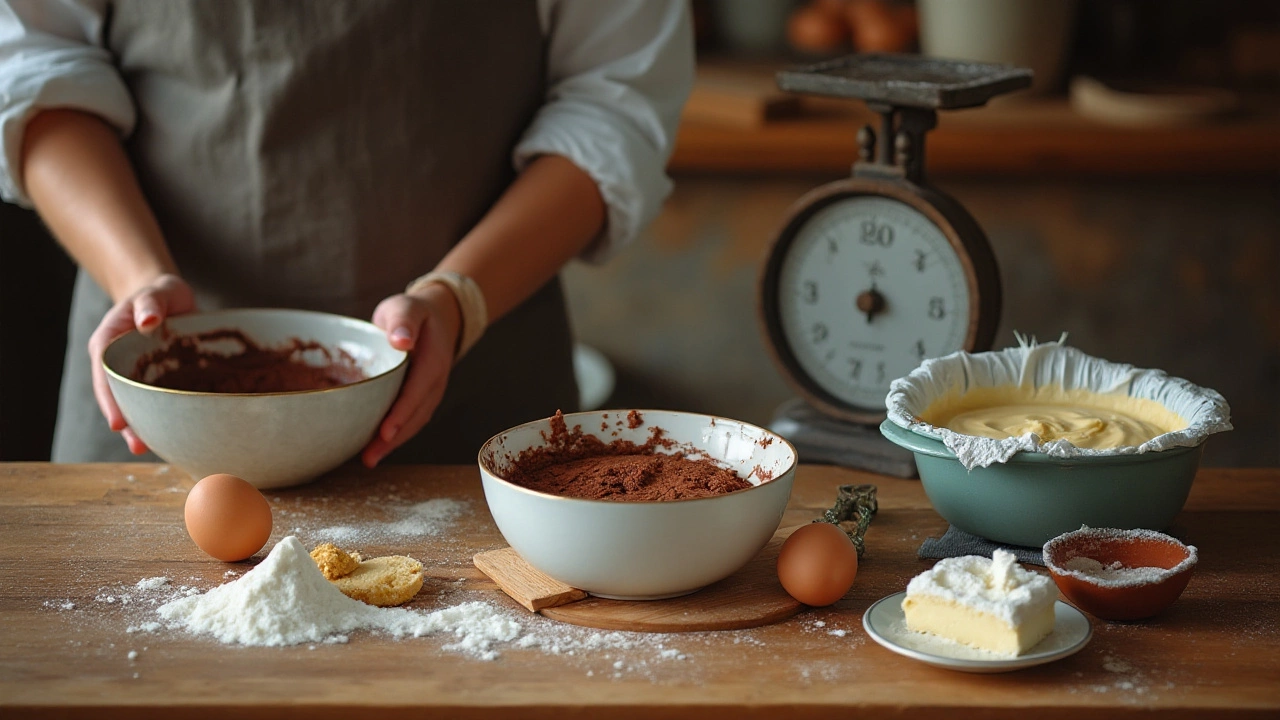Baking Tips & Tricks for Home Bakers
Ready to turn your kitchen into a mini bakery? You don’t need fancy equipment – just a few solid tips and a bit of confidence. Below you’ll find straight‑forward advice that works for everything from chewy cookies to silky fudge, and even those tricky gluten‑free cakes.
Essential Baking Basics
First up, temperature matters. Most recipes assume a 350°F (180°C) oven, but every oven is a little different. Use an oven thermometer and adjust by 10‑15° if you notice uneven browning.
Next, chill your dough when the recipe says so. For cookie dough, a 30‑minute chill in the fridge helps the butter firm up, which leads to a better spread and a richer flavor. If you’re short on time, even a quick 10‑minute chill on the counter can make a noticeable difference.
When it comes to fats, choose based on the texture you want. Oil gives cookies a flatter, crisp edge, while butter adds a tender crumb and richer taste. For most classic cookies, a mix of half butter, half oil hits the sweet spot.
Gluten‑free flour can feel like a gamble, but you don’t have to settle for a dense cake. Look for blends that contain a mix of rice flour, potato starch, and a binding agent like xanthan gum. Add a tablespoon of yogurt or applesauce to keep the crumb moist.
Quick Fixes & Pro Secrets
Got fudge that stays soft and never hardens? The culprit is usually too much fat or not enough sugar. Heat the mixture until it reaches the firm‑ball stage (about 240°F/115°C), then beat it vigorously once off the heat. If it’s still too soft, a quick sting of corn syrup can help it set.
If you’ve ever wondered what happens when you skip sugar in cookies, expect a flatter, less chewy result. Sugar not only sweetens; it also creates air pockets and contributes to spread. To keep a sugar‑free batch from turning into a brick, swap in a blend of erythritol and a touch of honey or maple syrup for moisture.
Storing brownies? Let them cool completely, then wrap them tightly in foil or a zip‑lock bag. They stay moist for up to four days. For a crunchier top, pop the wrapped brownies in a low oven (250°F) for a few minutes before serving.
Need a quick way to tell if your cookie dough is ready to bake? Scoop a small ball, flatten it on a parchment sheet, and bake for 2 minutes. If the edges set but the center stays soft, your full batch will be perfect after the full bake time.
Lastly, remember the power of flavor boosters. A pinch of sea salt on chocolate cookies or a splash of vanilla extract in cake batter can elevate a decent recipe to something memorable.
Put these tips into practice and you’ll see a noticeable upgrade in taste, texture, and confidence. Happy baking!



